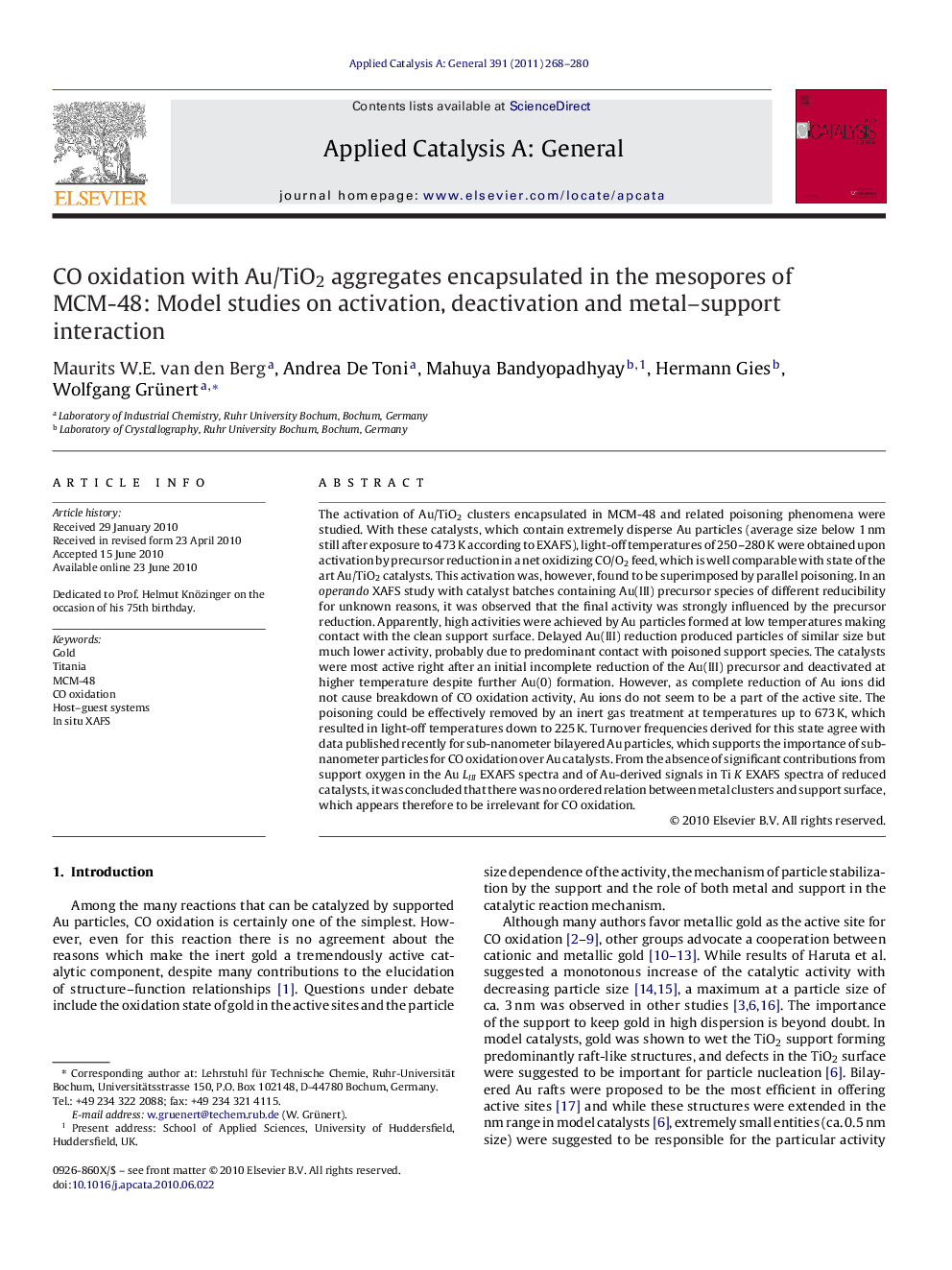| کد مقاله | کد نشریه | سال انتشار | مقاله انگلیسی | نسخه تمام متن |
|---|---|---|---|---|
| 41646 | 45895 | 2011 | 13 صفحه PDF | دانلود رایگان |

The activation of Au/TiO2 clusters encapsulated in MCM-48 and related poisoning phenomena were studied. With these catalysts, which contain extremely disperse Au particles (average size below 1 nm still after exposure to 473 K according to EXAFS), light-off temperatures of 250–280 K were obtained upon activation by precursor reduction in a net oxidizing CO/O2 feed, which is well comparable with state of the art Au/TiO2 catalysts. This activation was, however, found to be superimposed by parallel poisoning. In an operando XAFS study with catalyst batches containing Au(III) precursor species of different reducibility for unknown reasons, it was observed that the final activity was strongly influenced by the precursor reduction. Apparently, high activities were achieved by Au particles formed at low temperatures making contact with the clean support surface. Delayed Au(III) reduction produced particles of similar size but much lower activity, probably due to predominant contact with poisoned support species. The catalysts were most active right after an initial incomplete reduction of the Au(III) precursor and deactivated at higher temperature despite further Au(0) formation. However, as complete reduction of Au ions did not cause breakdown of CO oxidation activity, Au ions do not seem to be a part of the active site. The poisoning could be effectively removed by an inert gas treatment at temperatures up to 673 K, which resulted in light-off temperatures down to 225 K. Turnover frequencies derived for this state agree with data published recently for sub-nanometer bilayered Au particles, which supports the importance of sub-nanometer particles for CO oxidation over Au catalysts. From the absence of significant contributions from support oxygen in the Au LIII EXAFS spectra and of Au-derived signals in Ti K EXAFS spectra of reduced catalysts, it was concluded that there was no ordered relation between metal clusters and support surface, which appears therefore to be irrelevant for CO oxidation.
Au/TiO2 aggregates in MCM-48 exhibit similar CO oxidation activities as conventional Au/TiO2. In situ EXAFS studies did not indicate an ordered relation at the Au/TiO2 interface and suggested major activity contributions from sub-nanometer particles. Formed by activation in CO/air feed, these were rapidly poisoned, which could be reverted by thermal inert gas treatment. Complete reduction of Au ions did not cause breakdown of activity, which suggests minor relevance of Au ions.Figure optionsDownload high-quality image (91 K)Download as PowerPoint slideResearch highlights▶ Au/TiO2 nanoaggregates in MCM-48 with competitive CO oxidation activity. ▶ Au particles sizes per EXAFS below metal-nonmetal transition, no order at Au-TiO2 interface. ▶ CO oxidation activity observed after complete precursor reduction casts doubt on role of Au ions in CO oxidation. ▶ Drastic activation by thermal inert gas treatment followed by strong self-poisoning suggests steady-state activity coming from a minority of available sites.
Journal: Applied Catalysis A: General - Volume 391, Issues 1–2, 4 January 2011, Pages 268–280